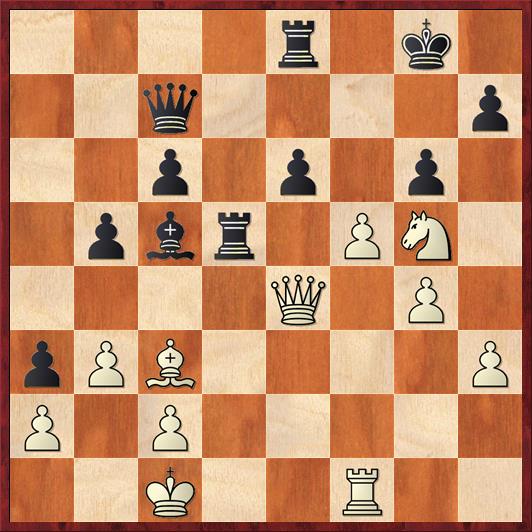Today my blog reaches a milestone — its one thousandth post! I started “dana blogs chess” a little over ten years ago, in October 2007, so that means I have averaged slightly less than a hundred posts per year.
I wondered whether I should compose something special for the occasion, as I did when I gave my one hundredth ChessLecture. But I decided that it would be best to mark one thousand posts by simply writing a very ordinary post, much like the 999 others. This one is a quiz from a recent game that I played against the computer program, Shredder, with its rating set to 2206.
Position after 29. … fxe6. White to move.
FEN: 4r1k1/2q4p/2p1p1p1/1pbr1PN1/4Q1P1/pPB4P/P1P5/2K2R2 w – – 0 30
This was a very exciting game, played at a time control of 10 minutes for 40 moves. First Shredder sacrificed a pawn, then I sacrificed back an exchange for a very menacing attack. Now it’s White’s move. I’ll give you a hint: White’s best move is with the f5-pawn. What do you do, and why? You only have a few seconds to decide.
First, here’s what I played:
30. fg? …
I simply thought I was winning. So I really didn’t bother to analyze anything else.
30. … Rxg5 31. Rf7! …
How can this not be winning, right? Unfortunately, Shredder has a response that I didn’t see.
31. … Qg3!
Out of nowhere, Black suddenly has back-rank threats. If I play 32. Rxh7, threatening mate in one, Black wins with 32. … Qg1+. This either forces the bishop to retreat, with 33. Be1, after which the queen trade 33. … Qe3+ wins easily for Black, or else the queen retreats with 33. Qe1, after which the queen trade is again good, or else White plays 33. Kd2 and walks into a mating net with 33. … Rd8+ 34. Ke2 Qd1 mate!
A great example of the computer’s unbelievable resourcefulness.
Fortunately, I do have a way out: I can play for a perpetual check.
32. Rg7+ Kf8 33. Rf7+ Kg8 ½-½
This was all right — playing against Shredder at 2206, I typically score way less than 50 percent — but nevertheless it was a bit deflating. Perhaps my attack wasn’t as strong as I thought? But then I saw, to my surprise, that Shredder’s own evaluation of the initial position was +1.81 pawns for White. Do you see what I missed?
The answer is 30. f6! This move also leaves the knight en prise, but this time Black doesn’t get any time for tactics of his own. After 30. … Rxg5 31. f7+ forces him to give up his queen, with 31. … Qxf7 32. Rxf7 Kxf7, and now comes the proverbial “scorpion’s sting,” 33. Qf4+ picking up the wayward rook. Although Black emerges with a rook and two pawns for the queen (which may account for Shredder’s initial +1.81 evaluation) in fact the endgame will be easily won for White because Black’s pawns are so weak.
Alternatively, if 30. f6+ Rf8 31. f7+ Rxf7 32. Nxf7, the threat of Nh6 mate forces Black to give up additional material: 32. … Qxf7 33. Rxf7 Kxf7 with another endgame similar to the one in the previous variation, only even worse for Black.
This is a pretty cool quiz, I think, because the winning line and the non-winning line both have a little bit more to them than meets the eye.
For me, the lesson is a familiar one: make sure you look at all the variations. Even if you see a move that you think is winning, look at the options because you might find one where the win is even clearer. Of course, this is very hard to do in a speed game with not very much time remaining, and against an all-seeing silicon opponent.




{ 1 comment… read it below or add one }
Just curious.
What does the computer recommend after 30 h4, threatening both 31. f6 and 31. fg6.